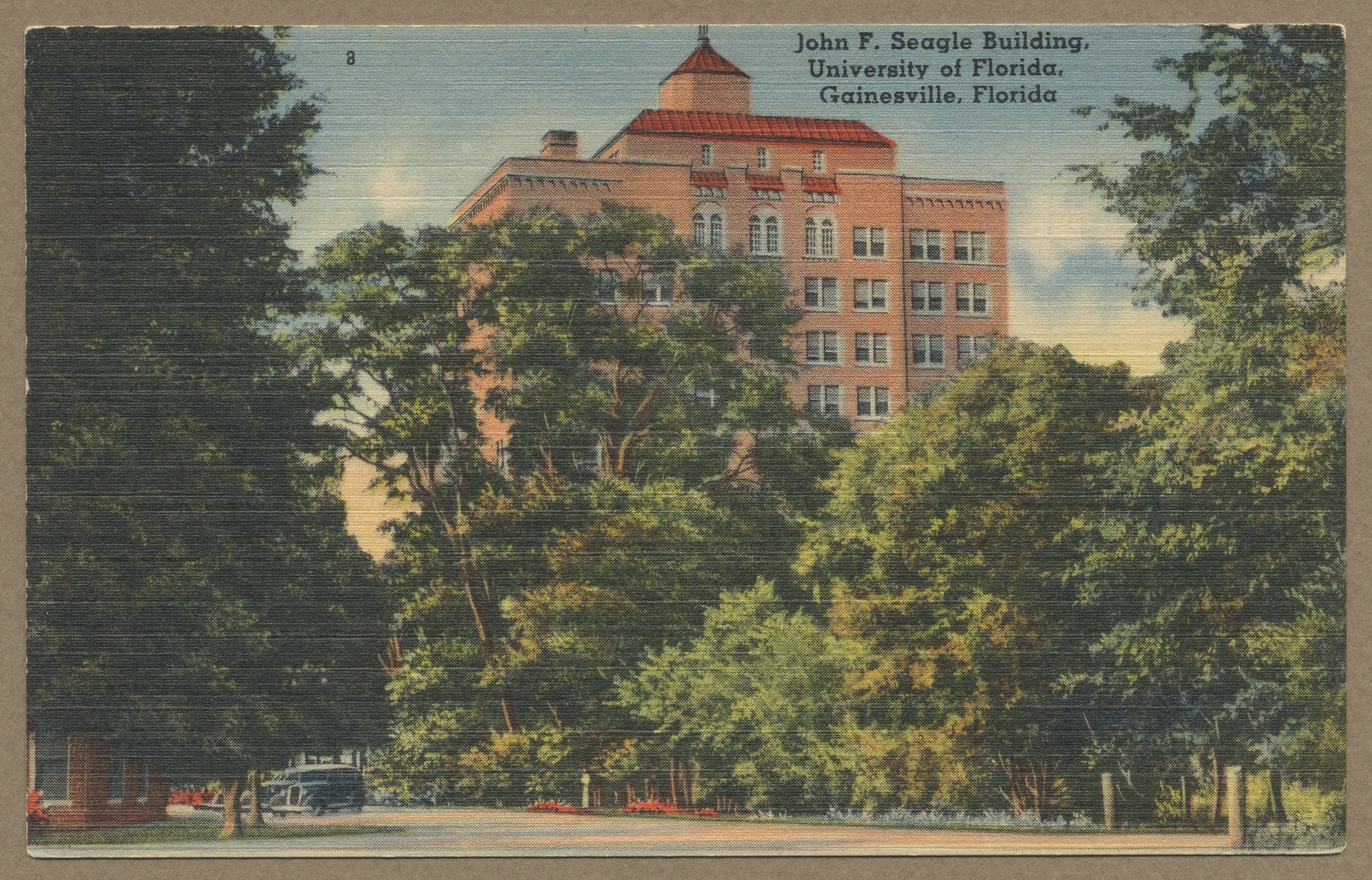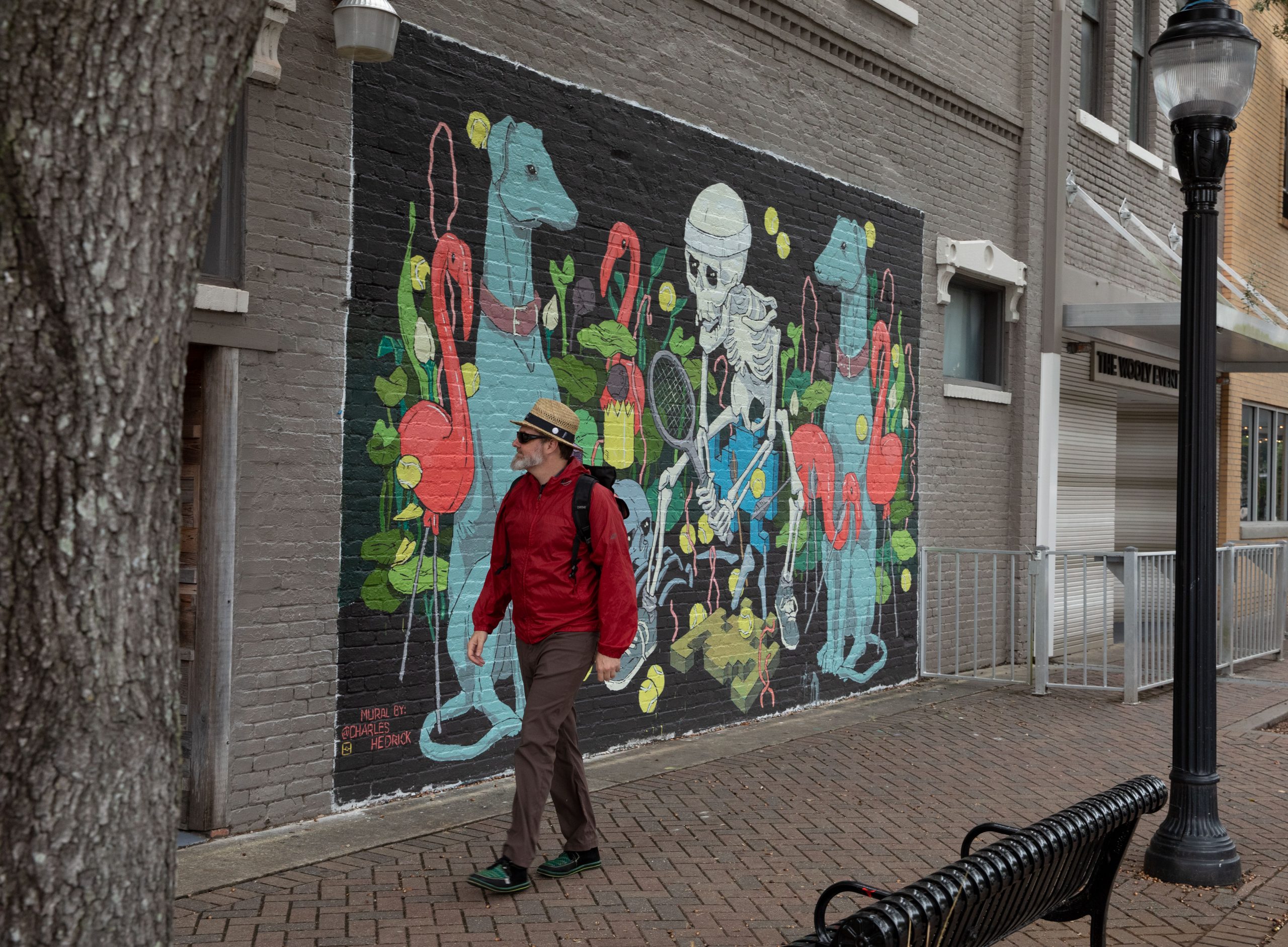Gainesville is a progressive city of 130,000 in North Central Florida. In its early days, it was a stop on the Fernandina to Cedar Key railroad and a winter resort frequented by the poet Robert Frost, among others. In the mid-1880s, the English composer Frederick Delius lived on the St. John’s River, to the east of Gainesville. His time there later inspired him to compose the famous Florida Suite. In 1928, Marjorie Kinnan Rawlings settled in nearby Cross Creek, where she wrote The Yearling, which won the Pulitzer Prize in 1939. In the nineteen-forties and nineteen-fifties, Gainesville was home to the Cotton Club, where such jazz luminaries Cab Calloway, Ella Fitzgerald, and Duke Ellington performed for a largely African-American audience.

Today Gainesville is best known as the hometown of the University of Florida, named in 2018 by US News and World Report as one of the top ten public universities in the United States. With its three hospitals, the city is renowned as a center for medical research and state-of-the-art treatment. More recently, it has been making a significant town-and-gown investment to become the Silicon Valley of the South. Gainesville has several notable museums: The Harn Museum of Art, the Florida Museum of Natural History, the Cade Museum for Creativity & Invention, and the Matheson History Museum. Other points of interest include the Historic Thomas Center, the Hippodrome Theater, the Butterfly Rainforest, and an extensive system of bike trails. Well-known natives and past and current residents include musicians (Bo Diddley, Don Felder, Tom Petty, and Stephen Stills), actors (Malcolm Gets, Joaquin Phoenix, River Phoenix, and Maya Rudolph), writers (Lauren Groff, Joe Haldeman, and Peter Taylor), Berniece Baker Miracle (Marilyn Monroe’s half-sister), and chess master Gabriel Schwartzmann.
Gainesville lies between the Gulf of Mexico (an hour to the West) and the Atlantic Ocean (ninety minutes to the East). Just to the south is Payne’s Prairie, the famous wet prairie visited, written about, and drawn by William Bartram in the late eighteenth century. On the east coast is St. Augustine, the oldest European settlement in North America (1565). On the gulf coast is Cedar Key, once famous for its pencil-making and fishing industries. Less than two hours to the south lies Orlando, with its internationally-famous theme parks, St. Petersburg (home of the Salvador Dali Museum), and, a little further on, Sarasota (home of the Ringling museums and the historic Asolo Theater. Obscurer but no less fascinating destination points include the former boomtown of Trilby, named for George Du Maurier’s novel (which introduced the character of Svengali), Gibsonton, founded as a wintering resort for workers in traveling circuses, sideshows, and “freak shows,” and the spiritualist community of Cassadaga, the self-described “psychic capital of the world.” Tallahassee, the state capital, is two hours to the northwest.

The last week of October, Gainesville is the scene of Fest, one of the largest punk music festivals in the country. Twice a year, the Friends of the Alachua County Library District hold an enormous book sale.
For outdoorsy types, Gainesville and its environs offer rich opportunities for kayaking and canoeing, biking, fishing, camping, and birding. The region is famous for its freshwater springs, ideal for swimming, diving, and snorkeling. To the northeast is majestic Cumberland Island, and out on the panhandle is breathtaking St. Joseph Peninsula State Park. Gatorade was invented by scientists at the University of Florida in 1965.
Gainesville is home to the Union Street Farmers Market, several microbreweries, bars, clubs, and restaurants of every type, people parks, including the recently opened Depot Park, and dog parks. Our regional airport with connection to Atlanta, Charlotte, and Miami, is seven minutes by car from downtown. Jacksonville (one-and-a-half hours by car), Orlando (two hours by car), and Tampa (two hours by car) offer both domestic and international nonstop flights.